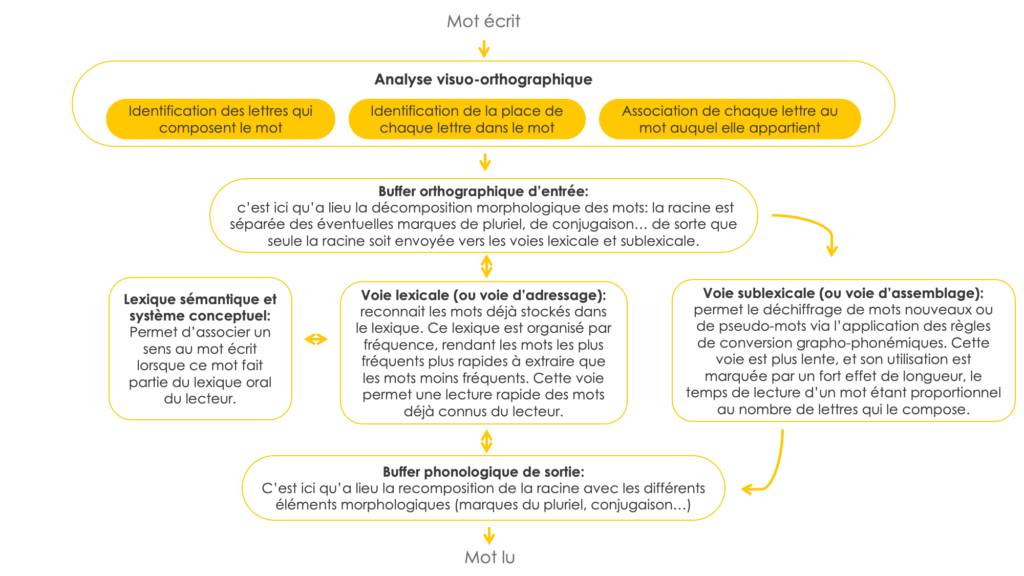Malabi
The Malabi is a dyslexia screening tool designed by our laboratory for students in the 6th and 5th grades. It is based on the model of Professor Naama Friedmann, who demonstrated the existence of different subtypes of dyslexia in a large number of languages (French, English, Italian, Hebrew, Arabic).
The Malabi is a dyslexia screening tool designed by our laboratory for students in the 6th and 5th grades. It is based on the model of Professor Naama Friedmann, who demonstrated the existence of different subtypes of dyslexia in a large number of languages (French, English, Italian, Hebrew, Arabic).
Reading is a complex process, requiring several steps, described in the model below. A deficit in any of these steps can lead to distinct types of reading deficits – distinct types of dyslexia. The Malabi was designed to identify these different subtypes of dyslexia in French.
Malabi uses stimuli sensitive to different forms of dyslexia, allowing them to be identified. The table below briefly presents the different types of dyslexia that can be identified with Malabi. To find out more, you can consult our article, published in the journal Cognitive Neuropsychology (https://doi.org/10.1080/02643294.2024.2327665)

Dual-route model of reading (after Friedmann & Coltheart, 2018)
Support our action
Support Excello and help provide quality, research-based educational resources.